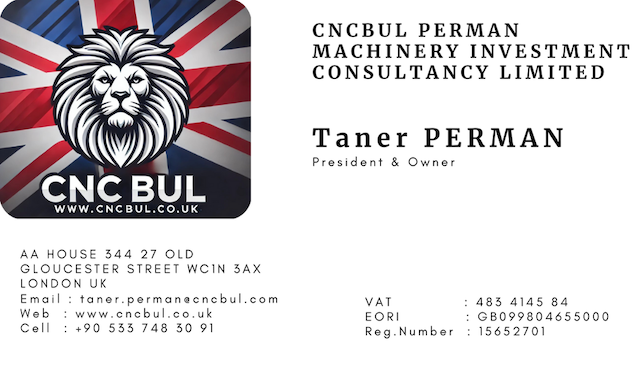Why do Customers prefer using Heavy-Duty Weld Positioner?
Customers prefer using heavy-duty weld positioners for a variety of technical reasons, primarily related to enhancing efficiency, precision, safety, and overall quality in welding operations. Here is a detailed technical explanation of why heavy-duty weld positioners are highly favored:
Structural Design and Build
1. Robust Construction
- Heavy-duty weld positioners are constructed with robust, often reinforced, frames made from high-strength steel or other durable materials. This construction provides the necessary rigidity and stability to handle large and heavy workpieces without deflection or vibration, which is critical for maintaining precision in welding operations.
2. Load Capacity
- These positioners are designed to support significant loads, often ranging from several tons to over 100 tons. The high load capacity allows them to handle large workpieces such as structural components, heavy machinery parts, and large pipes, making them suitable for industries such as shipbuilding, construction, and aerospace.
Precision and Accuracy
1. Accurate Positioning
- Heavy-duty weld positioners provide precise control over the positioning of the workpiece. They can rotate and tilt the workpiece to the exact angle and position required for optimal welding. This accuracy is essential for achieving high-quality welds, particularly in complex or multi-pass welding operations.
2. Variable Speed Control
- These positioners are equipped with variable speed control for rotation and tilt movements. This feature allows the operator to adjust the speed according to the welding process requirements, ensuring consistent weld quality and reducing the risk of defects.
Efficiency and Productivity
1. Improved Access to Welding Zones
- By rotating and tilting the workpiece, weld positioners provide better access to the welding zones. This improved access allows welders to work in more ergonomic positions, reducing fatigue and increasing productivity. It also enables continuous welding without the need to reposition the workpiece manually.
2. Reduced Setup Time
- The ability to quickly and accurately position the workpiece reduces setup times significantly. This efficiency allows for faster transitions between different welding tasks, increasing overall throughput and productivity.
Versatility and Flexibility
1. Handling Complex Geometries
- Heavy-duty weld positioners can handle complex and irregularly shaped workpieces with ease. Their ability to tilt, rotate, and position the workpiece at various angles makes them highly versatile and suitable for a wide range of welding applications.
2. Integration with Automation Systems
- These positioners can be integrated with robotic welding systems and other automation equipment. This integration enhances the flexibility and efficiency of automated welding processes, allowing for precise and repeatable welds on complex parts.
Safety and Ergonomics
1. Enhanced Safety
- Heavy-duty weld positioners improve safety by reducing the need for manual handling and repositioning of large and heavy workpieces. This reduction in manual handling minimizes the risk of injuries related to lifting and moving heavy objects.
2. Ergonomic Working Positions
- By positioning the workpiece at the optimal height and angle, weld positioners allow welders to work in more comfortable and ergonomic positions. This ergonomic benefit reduces fatigue and strain on the welder, improving overall safety and productivity.
Advanced Features and Technology
1. Remote Control Operation
- Many heavy-duty weld positioners come with remote control capabilities, allowing operators to adjust the position and speed of the workpiece from a safe distance. This feature enhances operational safety and convenience.
2. Programmable Controls
- Advanced weld positioners are equipped with programmable controls that allow for the automation of positioning sequences. These controls can store and recall multiple positioning programs, enhancing efficiency and consistency in repetitive welding tasks.
Maintenance and Reliability
1. Durability and Longevity
- Heavy-duty weld positioners are built to withstand the rigors of continuous use in demanding industrial environments. High-quality components and robust construction ensure long-term reliability and minimal maintenance requirements.
2. Ease of Maintenance
- These positioners are designed for easy maintenance, with accessible components and user-friendly diagnostic systems. Regular maintenance is simplified, ensuring that the equipment remains in optimal working condition with minimal downtime.
Specific Advantages in Welding Operations
1. Consistent Weld Quality
- By providing precise and stable positioning of the workpiece, weld positioners ensure consistent weld quality. The ability to maintain a constant welding speed and angle reduces the likelihood of defects and improves the overall quality of the welds.
2. Reduction in Welding Defects
- Proper positioning minimizes issues such as weld spatter, porosity, and incomplete fusion. The consistent and controlled environment provided by the positioner allows for better control of the welding process, reducing the occurrence of defects.
3. Enhanced Welding Techniques
- Heavy-duty weld positioners enable the use of advanced welding techniques, such as multi-pass welding and complex weld patterns. The ability to position the workpiece precisely allows for better control over the welding process, facilitating the execution of intricate welding tasks.
Applications Across Industries
1. Shipbuilding
- In the shipbuilding industry, heavy-duty weld positioners are used to handle large and heavy ship components, ensuring precise and efficient welding operations.
2. Construction and Infrastructure
- These positioners are essential for welding large structural components in construction and infrastructure projects, such as bridges, buildings, and heavy machinery.
3. Aerospace
- The aerospace industry benefits from the precision and versatility of heavy-duty weld positioners, which are used to weld complex aircraft components with high accuracy.
4. Oil and Gas
- In the oil and gas industry, weld positioners are used to handle and weld large pipelines and pressure vessels, ensuring high-quality and reliable welds.
Conclusion
Customers prefer heavy-duty weld positioners for their advanced technical features, precision, efficiency, versatility, safety, and overall reliability. These machines offer significant advantages in terms of accurate positioning, reduced setup times, improved access to welding zones, and enhanced safety and ergonomics. Their ability to handle complex geometries and integrate with automation systems makes them indispensable in various industrial applications. The durability, ease of maintenance, and consistent weld quality provided by heavy-duty weld positioners make them a top choice for manufacturers seeking high-quality and efficient welding solutions.

